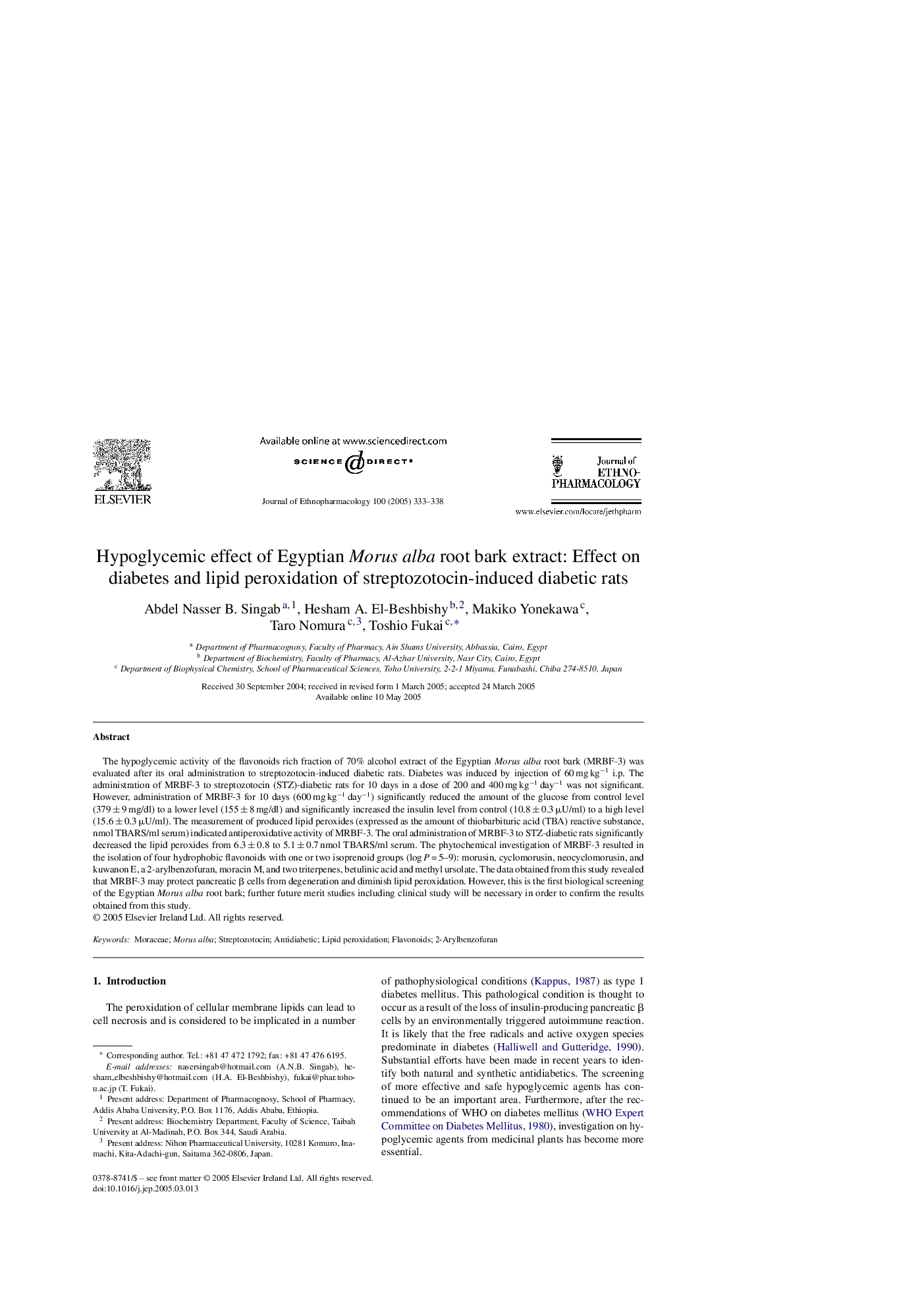| Article ID | Journal | Published Year | Pages | File Type |
|---|---|---|---|---|
| 9009693 | Journal of Ethnopharmacology | 2005 | 6 Pages |
Abstract
The hypoglycemic activity of the flavonoids rich fraction of 70% alcohol extract of the Egyptian Morus alba root bark (MRBF-3) was evaluated after its oral administration to streptozotocin-induced diabetic rats. Diabetes was induced by injection of 60 mg kgâ1 i.p. The administration of MRBF-3 to streptozotocin (STZ)-diabetic rats for 10 days in a dose of 200 and 400 mg kgâ1 dayâ1 was not significant. However, administration of MRBF-3 for 10 days (600 mg kgâ1 dayâ1) significantly reduced the amount of the glucose from control level (379 ± 9 mg/dl) to a lower level (155 ± 8 mg/dl) and significantly increased the insulin level from control (10.8 ± 0.3 μU/ml) to a high level (15.6 ± 0.3 μU/ml). The measurement of produced lipid peroxides (expressed as the amount of thiobarbituric acid (TBA) reactive substance, nmol TBARS/ml serum) indicated antiperoxidative activity of MRBF-3. The oral administration of MRBF-3 to STZ-diabetic rats significantly decreased the lipid peroxides from 6.3 ± 0.8 to 5.1 ± 0.7 nmol TBARS/ml serum. The phytochemical investigation of MRBF-3 resulted in the isolation of four hydrophobic flavonoids with one or two isoprenoid groups (log P = 5-9): morusin, cyclomorusin, neocyclomorusin, and kuwanon E, a 2-arylbenzofuran, moracin M, and two triterpenes, betulinic acid and methyl ursolate. The data obtained from this study revealed that MRBF-3 may protect pancreatic β cells from degeneration and diminish lipid peroxidation. However, this is the first biological screening of the Egyptian Morus alba root bark; further future merit studies including clinical study will be necessary in order to confirm the results obtained from this study.
Related Topics
Health Sciences
Pharmacology, Toxicology and Pharmaceutical Science
Pharmacology
Authors
Abdel Nasser B. Singab, Hesham A. El-Beshbishy, Makiko Yonekawa, Taro Nomura, Toshio Fukai,
